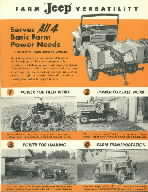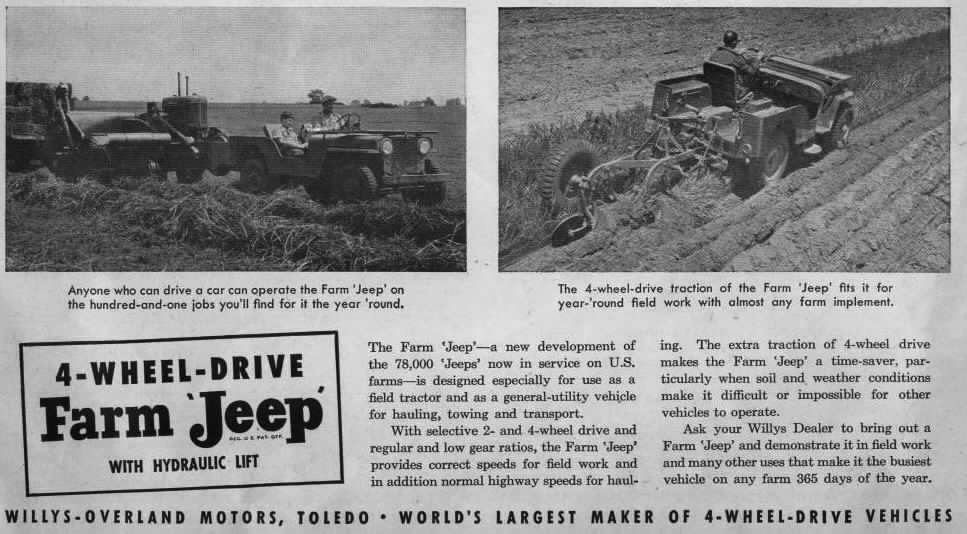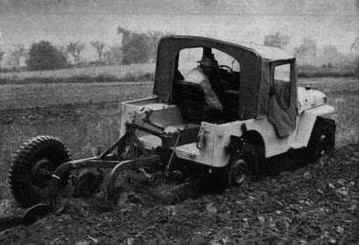 What is a Farm Jeep and Jeep Tractor
What is a Farm Jeep and Jeep Tractor
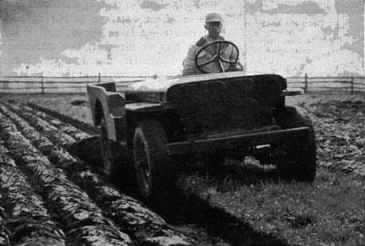
In 1951 Willys formed a
special department to combat the slumping farm market sales. The
newly formed Farm Sales Department had complete control of
distribution and implement procurement for the farm market. They
were to field test implements to ensure compatibility with the
Jeep before being authorized for sale by Willys. This was done
so unsuitable equipment wouldn't tarnish the Jeeps reputation.
Two new versions of the existing CJ-3A were also introduced, the
Farm Jeep and the Jeep Tractor. The Farm Jeep was a regular Jeep
with factory installed hydraulic lift, drawbar, propeller shaft
guards, heavy duty springs and variable speed belt driven
governor. The Jeep Tractor had factory installed hydraulic lift,
power take off, governor, drawbar, heavy-duty springs, front
bumper weight, propeller shaft guards and radiator chaff screen.
The Jeep Tractor did not have front shocks and assembly, spare
tire, spare wheel and brackets, windshield and assembly, fuel
pump vacuum booster, tailgate, lighting system, door curtain
retaining channels, oil filter, speedometer assembly or horn.
Equipment needed primarily for road service was not built into
the Jeep Tractor so this was designed for field use only.
 During World War II
Willys worked diligently to secure the market for after war sales.
Ads appeared in magazines touting the jeeps dependability,
ruggedness, and versatility. In 1944 Willys ads started to
include references about using jeeps on farms, they were billed as a
tractor that could also be used as utility vehicle. The illustration
to the left is from an ad that appeared in the Saturday Evening
Post, June 24, 1944. Looking into the crystal ball we see the many
uses for the jeep including pulling a tandem disc harrow on a farm.
This and other vintage ads can be found in the book Selling the
All~American Wonder by Frederic L. Coldwell.
During World War II
Willys worked diligently to secure the market for after war sales.
Ads appeared in magazines touting the jeeps dependability,
ruggedness, and versatility. In 1944 Willys ads started to
include references about using jeeps on farms, they were billed as a
tractor that could also be used as utility vehicle. The illustration
to the left is from an ad that appeared in the Saturday Evening
Post, June 24, 1944. Looking into the crystal ball we see the many
uses for the jeep including pulling a tandem disc harrow on a farm.
This and other vintage ads can be found in the book Selling the
All~American Wonder by Frederic L. Coldwell. 
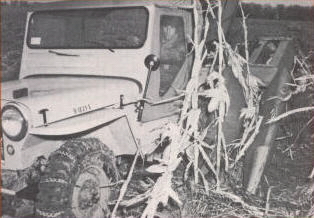 On the left is a
photo of the "New Farm Jeep" pulling a corn picker near Bowling
Green, Ohio from the Willys March 1951 Salesbuilder publication. It
is shown with a half cab soft top with late large windows, correct
for 1951 and later.
On the left is a
photo of the "New Farm Jeep" pulling a corn picker near Bowling
Green, Ohio from the Willys March 1951 Salesbuilder publication. It
is shown with a half cab soft top with late large windows, correct
for 1951 and later. 